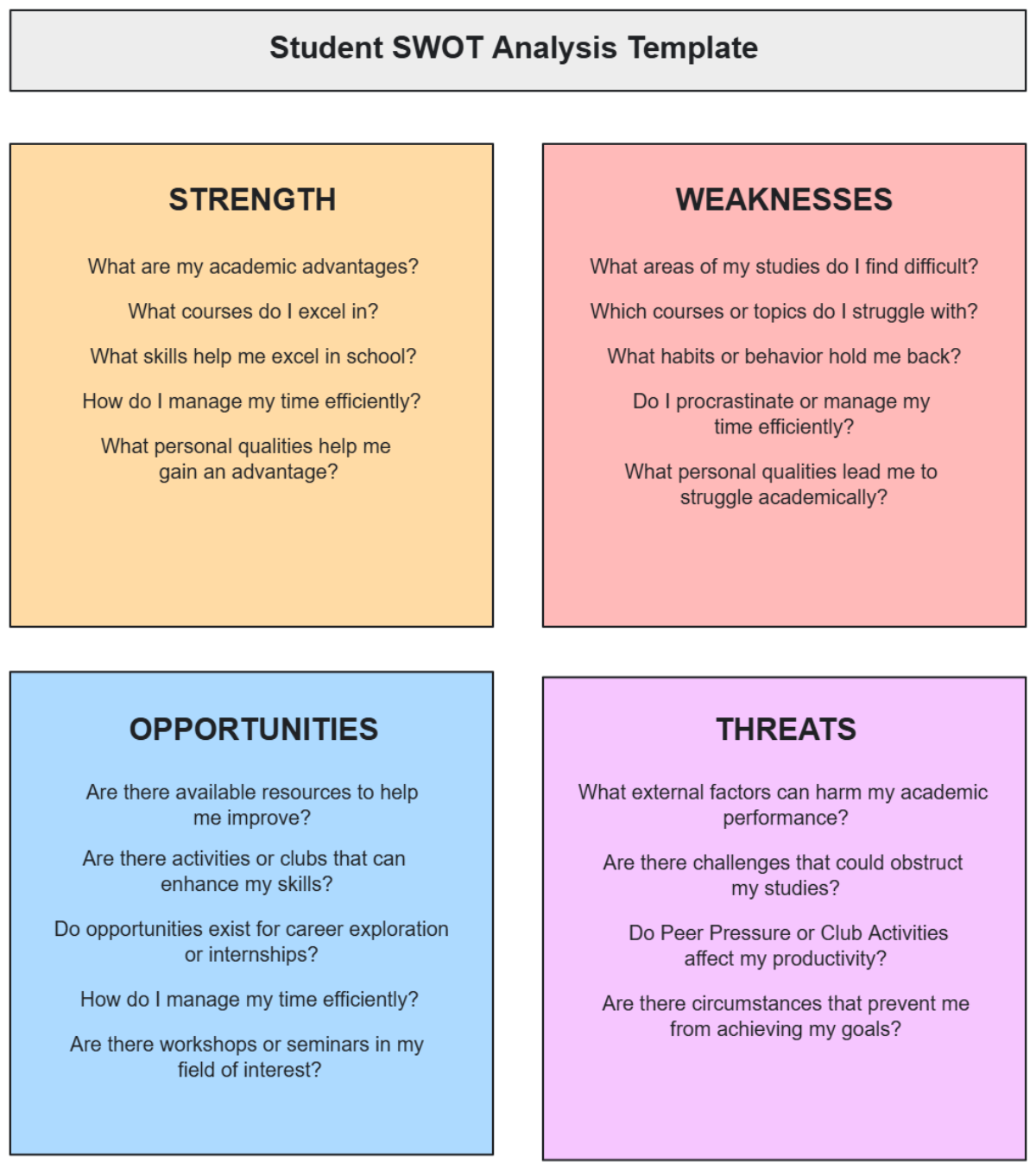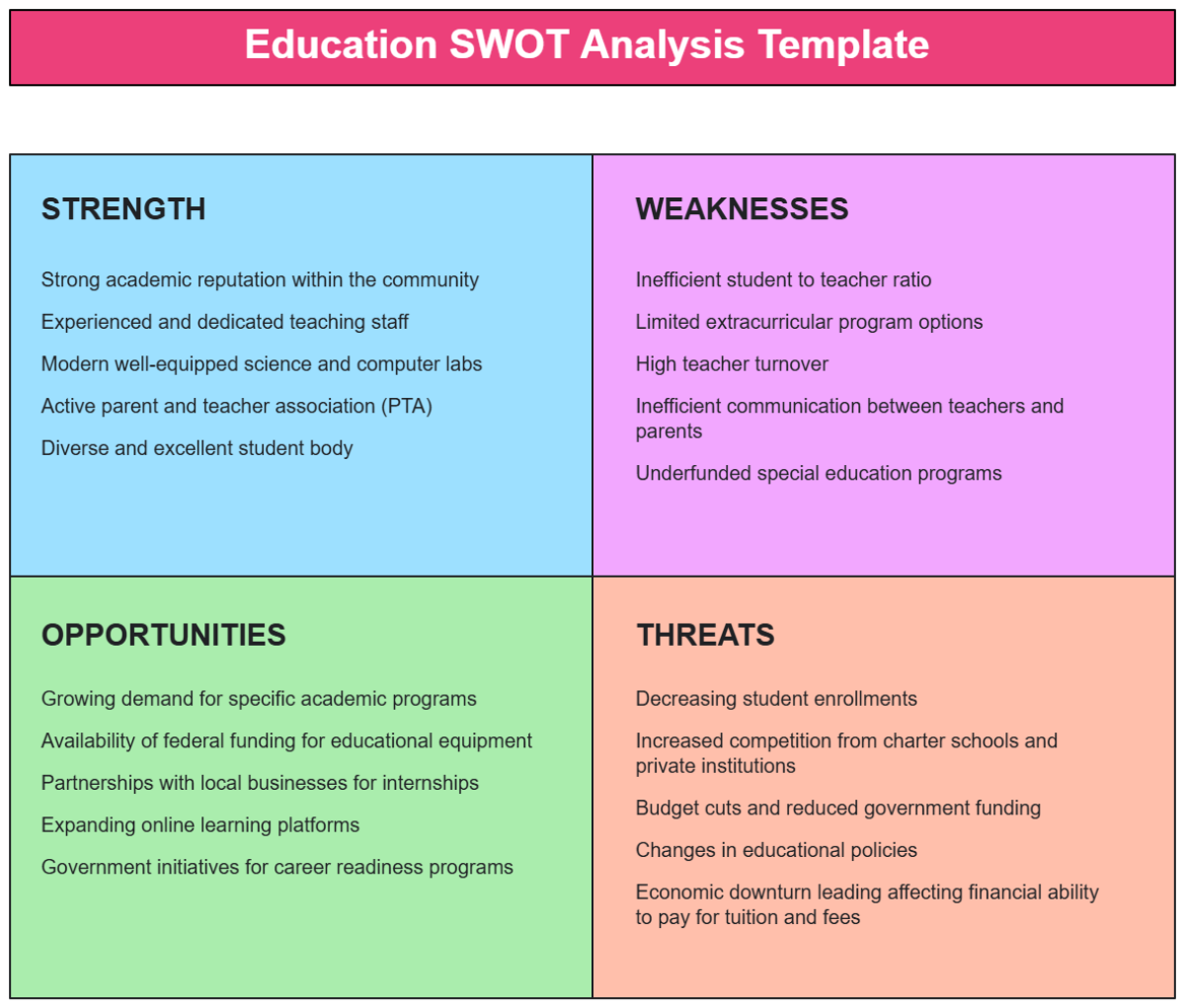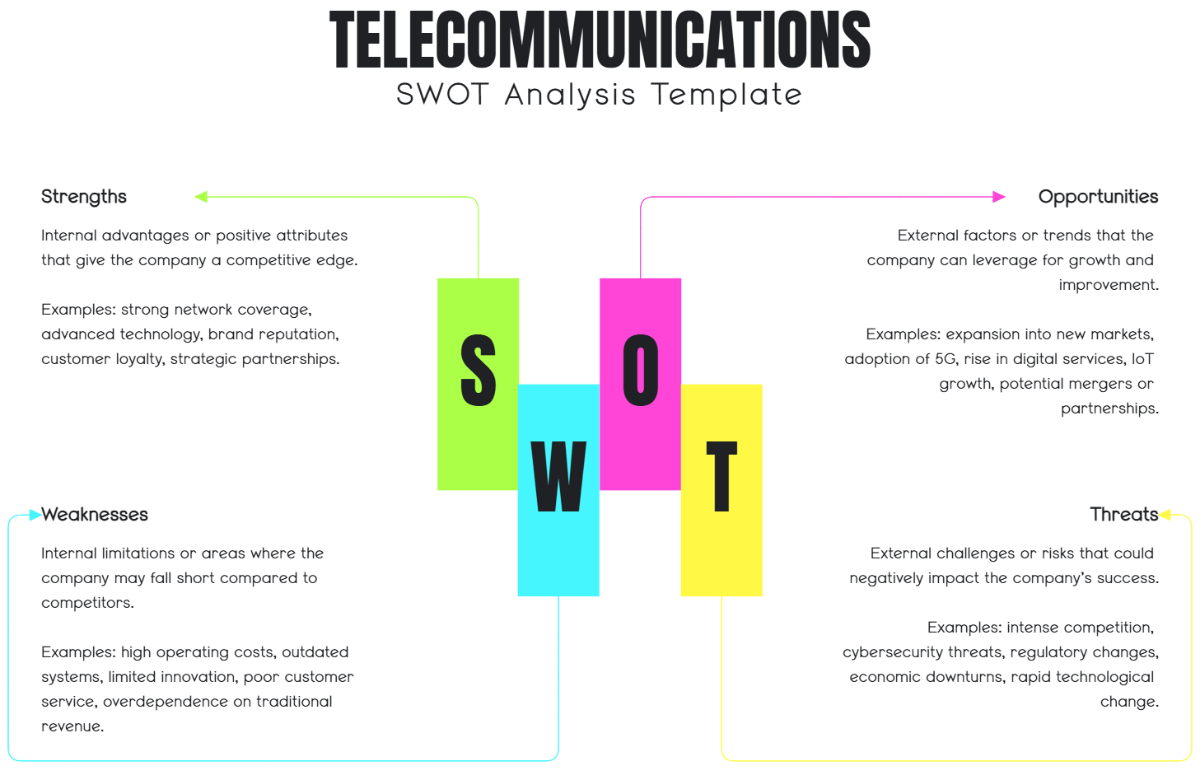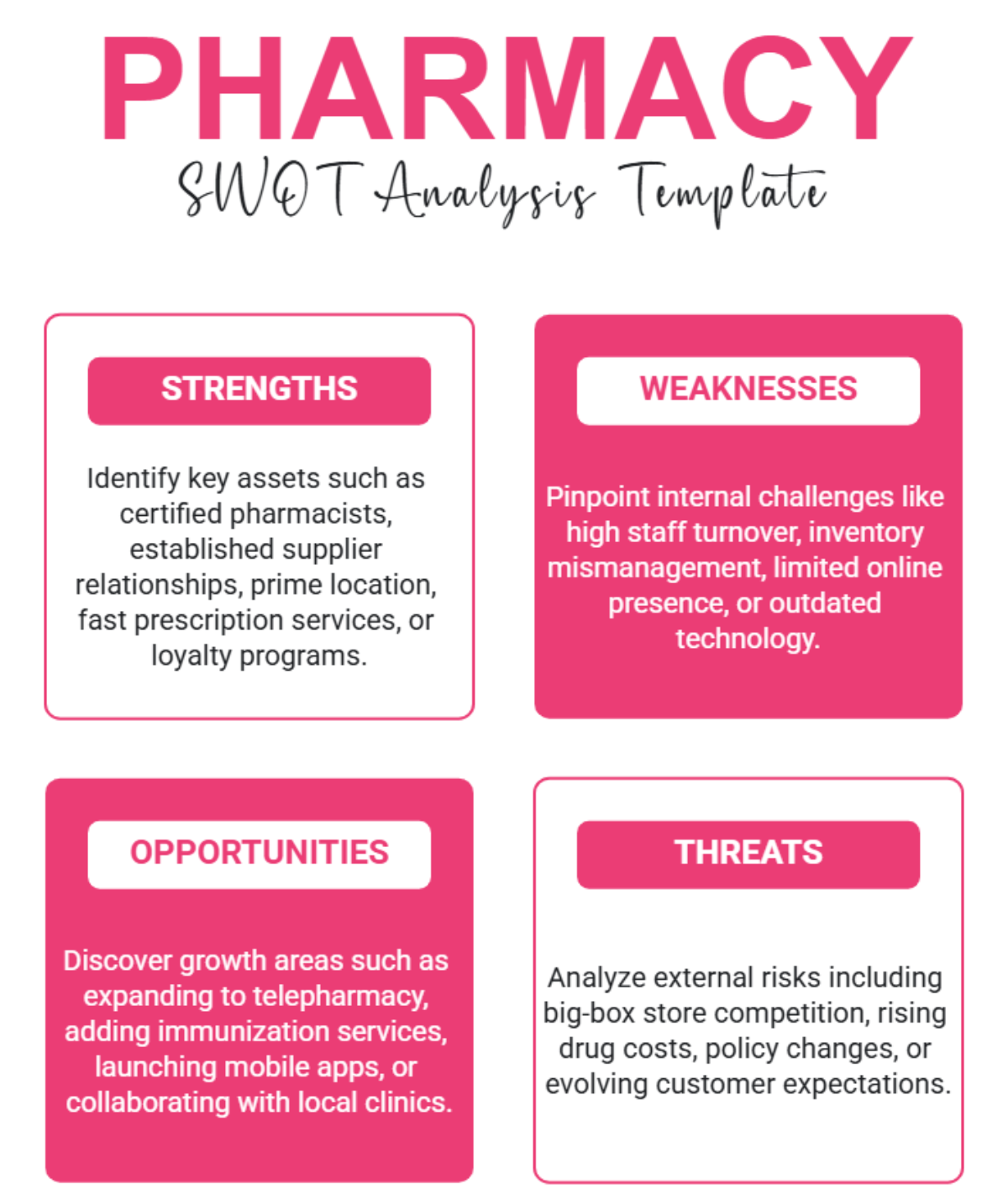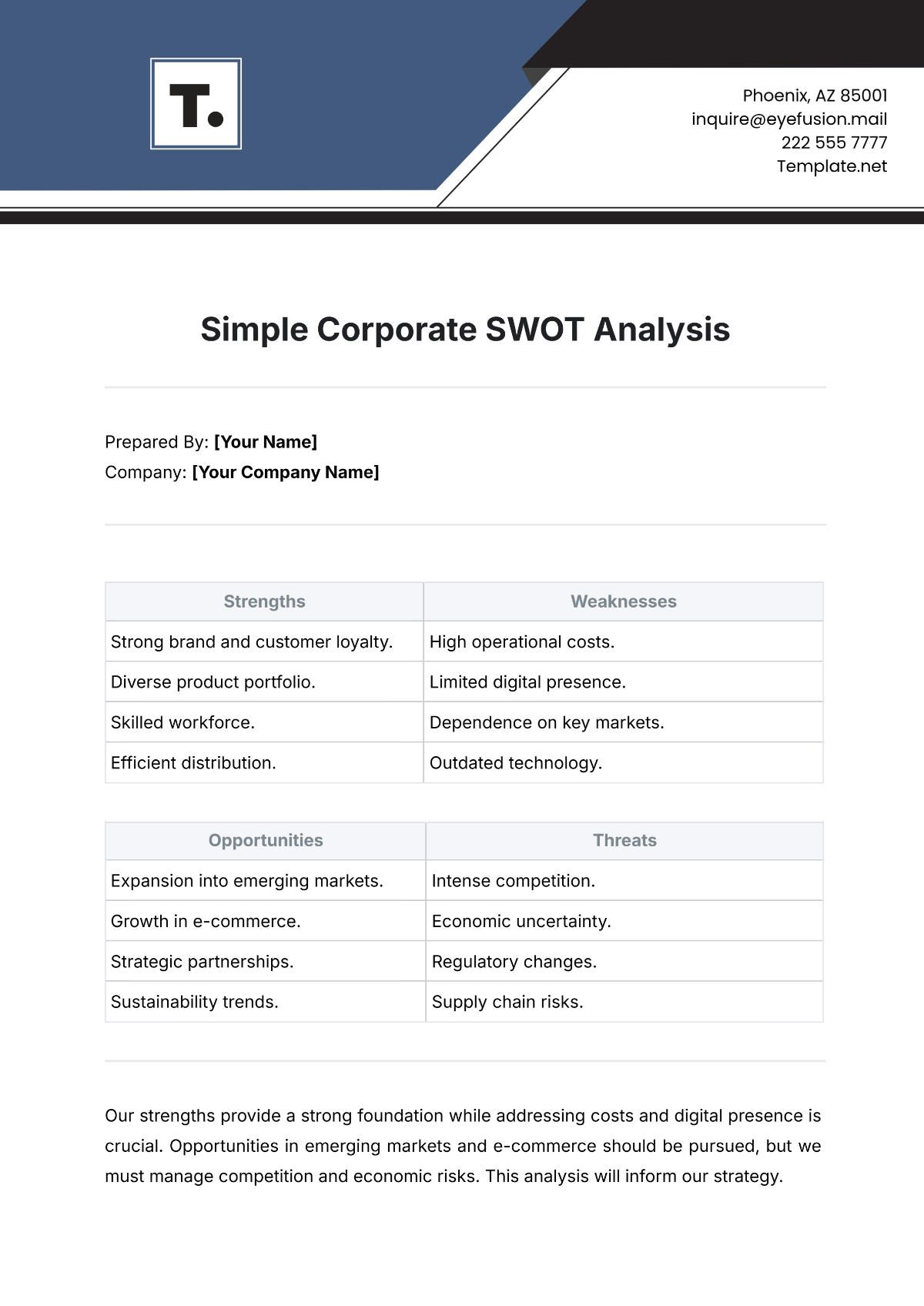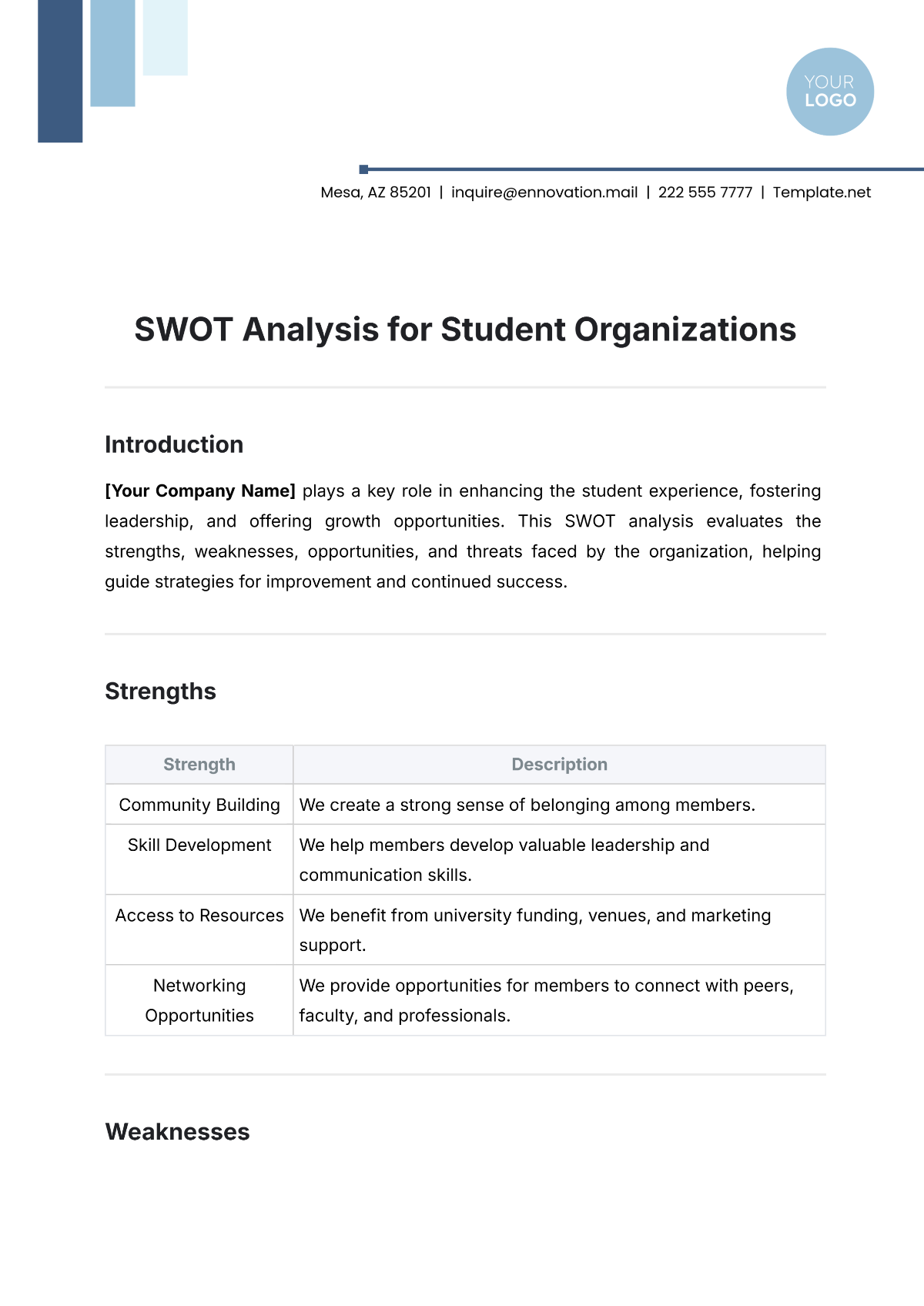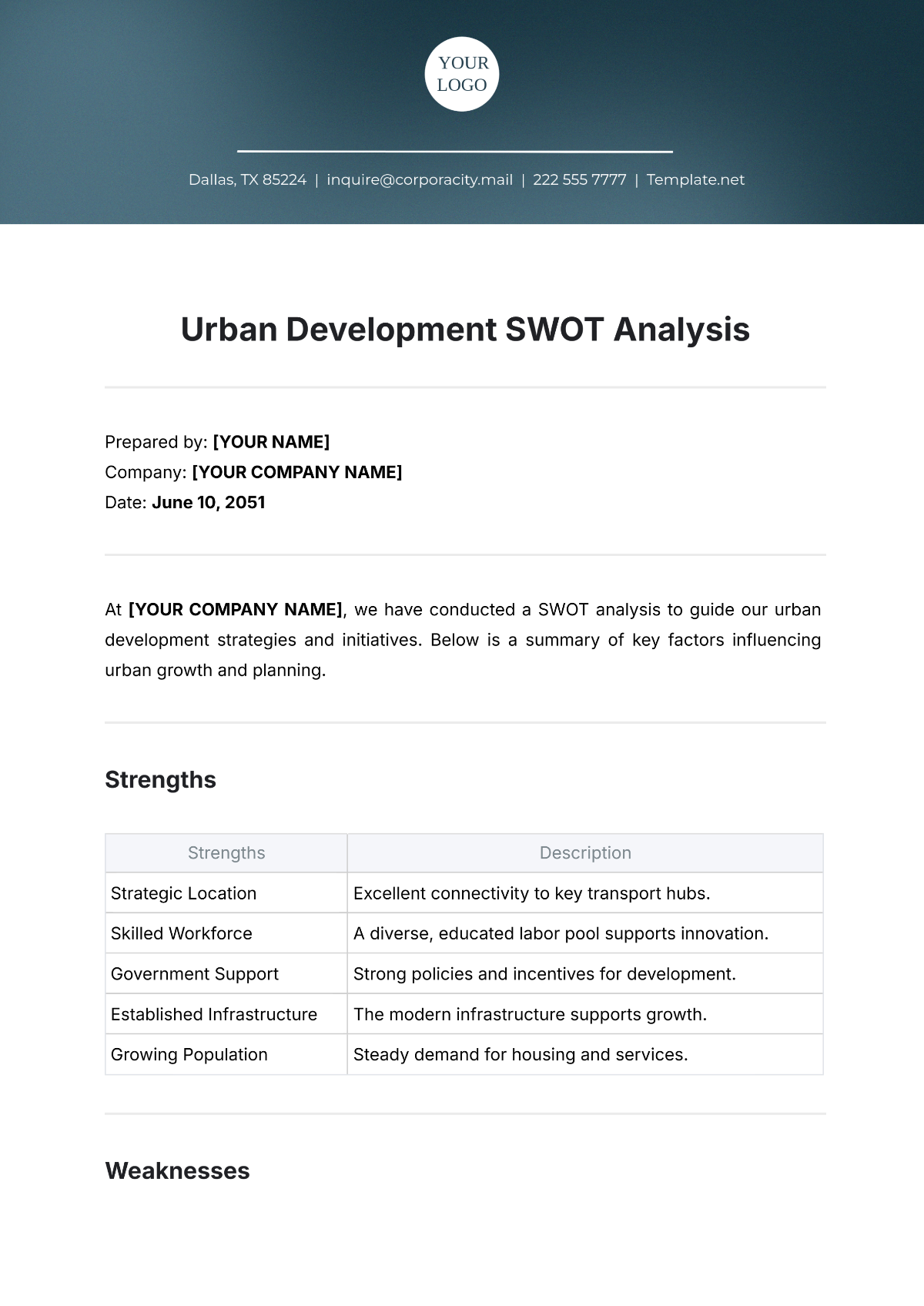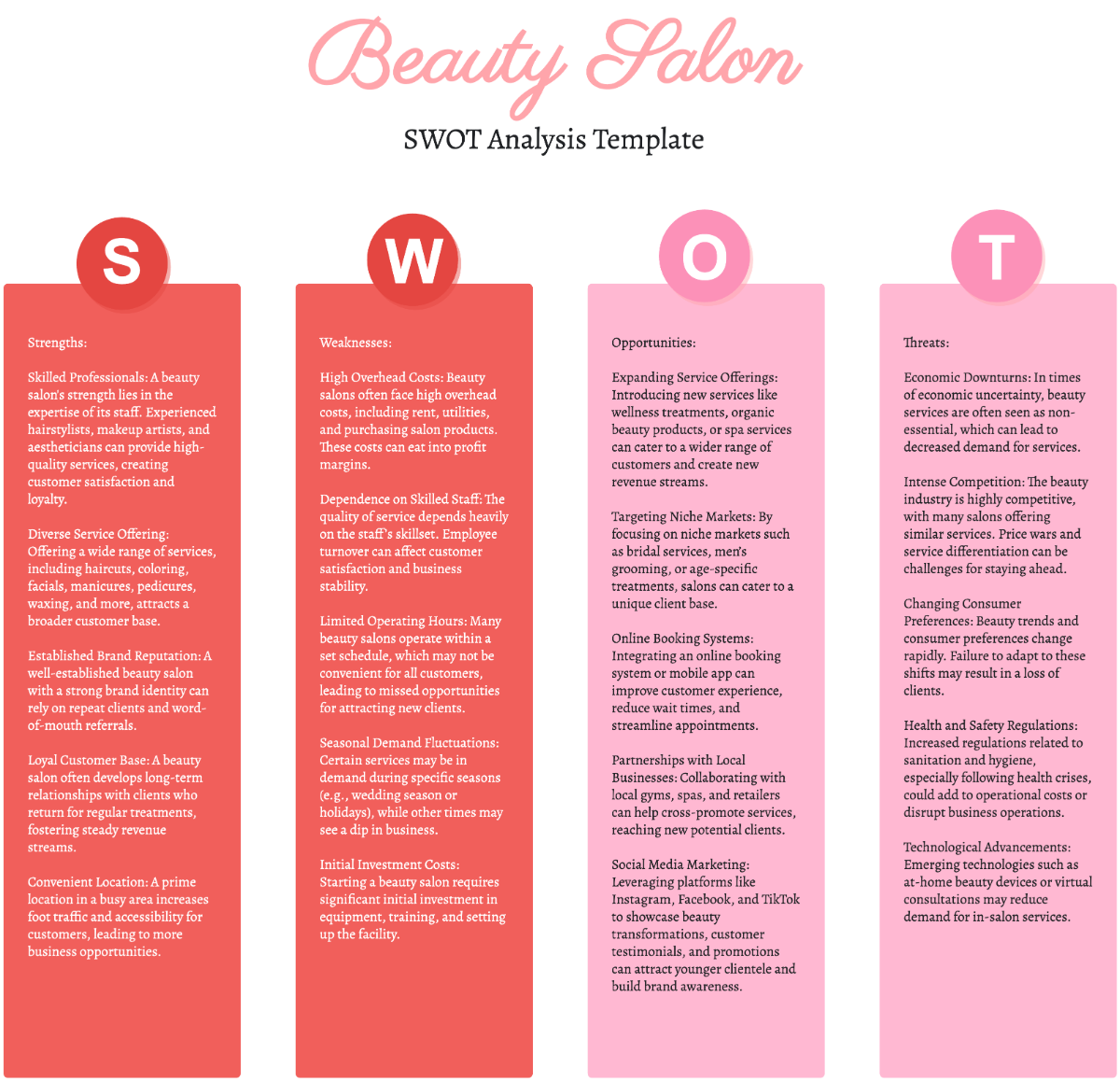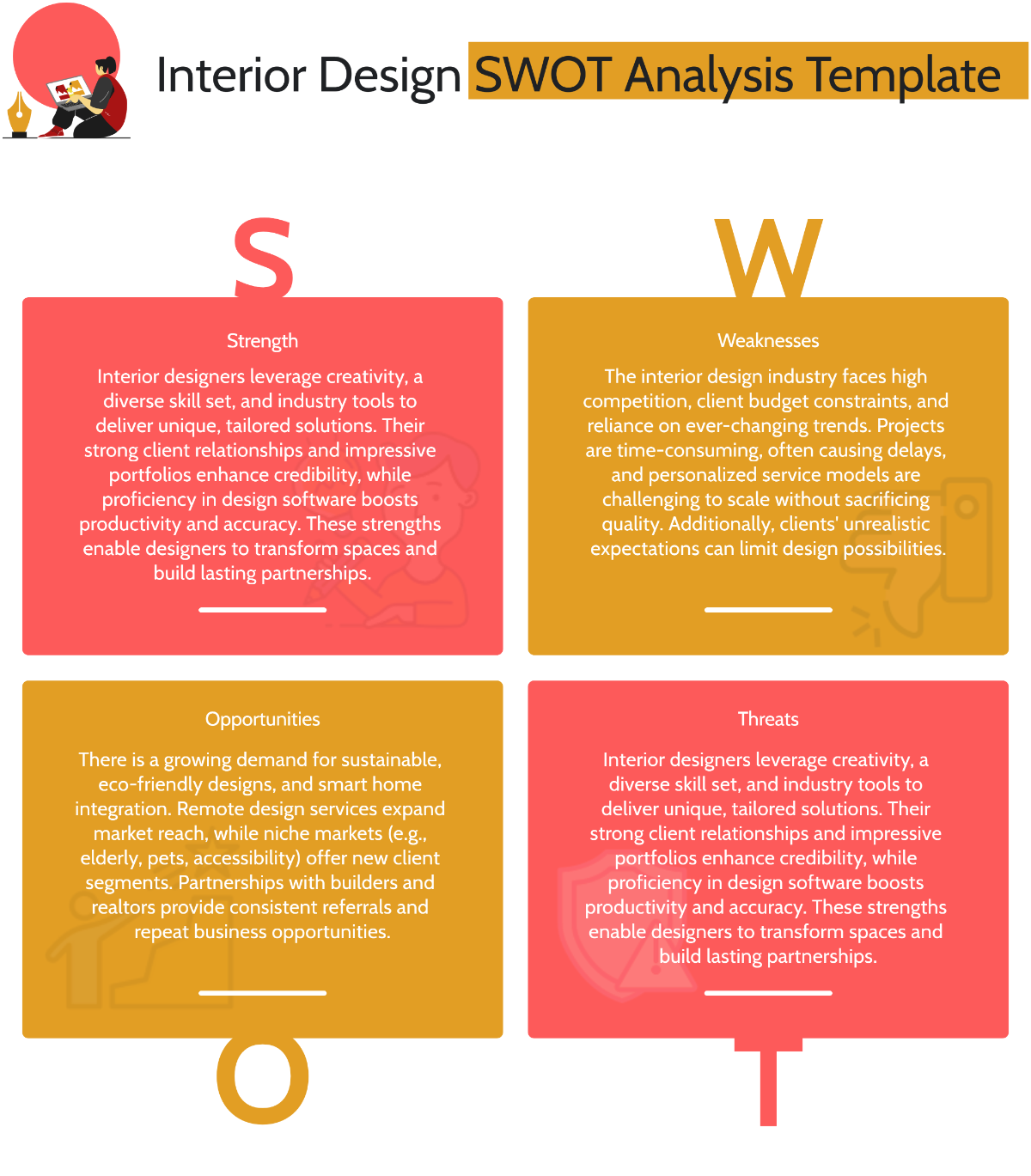SWOT Analysis Report
Date: January 2050
Conducted by: [Your Company Name]
Subject: SolarTech Innovations Ltd.
1. Introduction
This SWOT Analysis Report evaluates the current position of SolarTech Innovations Ltd., a leading provider of solar energy solutions. The purpose of this analysis is to identify internal strengths, and weaknesses, as well as external opportunities and threats in order to inform future strategic decisions. The report uses data gathered from recent market trends, financial performance, and technological developments.
2. Strengths
Strengths represent internal factors that provide a competitive advantage for SolarTech Innovations Ltd.
Innovative Solar Technology: The company has developed a unique, highly efficient solar panel system that significantly reduces energy costs for large industrial clients.
Strong Research & Development Team: SolarTech has invested heavily in R&D, giving it a cutting-edge advantage in solar battery storage and renewable energy technologies.
Brand Reputation: Known for high-quality products and excellent customer service, SolarTech has built a strong brand in the renewable energy sector.
Strategic Location: The company operates in multiple regions with abundant solar resources, ensuring optimal energy production and minimizing operational costs.
3. Weaknesses
Weaknesses represent internal challenges that could hinder performance or growth.
High Production Costs: The cost of manufacturing solar panels and batteries remains high due to reliance on expensive materials and intricate manufacturing processes.
Limited Global Reach: While SolarTech is dominant in certain regions, it has minimal market penetration in Asia and Africa, where renewable energy demand is growing rapidly.
Scalability Challenges: The company faces difficulties in scaling up operations quickly due to the complexity of its technology and production infrastructure.
Dependency on Subsidies: A significant portion of revenue is tied to government subsidies for renewable energy companies, making the business vulnerable to regulatory changes.
4. Opportunities
Opportunities represent external factors that could benefit SolarTech Innovations Ltd. in the future.
Global Shift Toward Renewable Energy: As countries around the world commit to achieving net-zero carbon emissions by 2060, there is an increasing demand for clean energy solutions, especially solar power.
Expansion into Emerging Markets: There are significant opportunities to enter markets in Asia, Africa, and South America, where solar energy adoption is rapidly increasing.
Technological Advancements in Storage Solutions: Breakthroughs in energy storage technology could enhance SolarTech’s battery products, enabling longer storage durations and increasing product appeal.
Public-Private Partnerships: Collaboration with governments and private entities to implement large-scale solar energy projects offers a chance for significant growth and visibility.
5. Threats
Threats represent external factors that could negatively impact SolarTech Innovations Ltd.
Intensifying Competition: Several established companies and new entrants are rapidly innovating in the renewable energy sector, increasing pressure on pricing and market share.
Volatility of Raw Material Prices: Fluctuating prices of raw materials, such as silicon and lithium, could lead to unpredictable manufacturing costs, reducing profit margins.
Regulatory Uncertainty: Changes in government policies or a reduction in subsidies for renewable energy projects could negatively affect business performance.
Technological Disruptions: Emerging alternative energy solutions (e.g., hydrogen power, fusion energy) may disrupt the solar energy market in the coming decades.
6. Conclusion and Recommendations
SolarTech Innovations Ltd. has strong foundations with its innovative technologies and reputable brand. However, to maintain its competitive edge and grow in the rapidly evolving renewable energy market, the company must address its internal weaknesses and external threats. Key recommendations include:
Focus on Cost Efficiency: Invest in production automation and explore cheaper raw material alternatives to reduce the cost of solar panel manufacturing.
Geographic Expansion: Actively pursue market expansion strategies in Asia, Africa, and South America to tap into growing demand for renewable energy solutions.
Enhance Product Scalability: Streamline production processes and establish scalable manufacturing facilities to meet increasing global demand.
Advocate for Policy Support: Work with governments to secure long-term renewable energy incentives and favorable regulations to ensure business stability.
7. Action Plan
Short-Term Goals (1-2 years):
Research and implement automation techniques to reduce production costs by 15%.
Launch marketing campaigns targeting emerging markets in Asia and Africa.
Initiate partnerships with local governments to align with national renewable energy goals.
Mid-Term Goals (3-5 years):
Establish a presence in key emerging markets, securing contracts with large-scale solar installations.
Develop a second-generation solar panel that improves efficiency by 20%.
Form strategic alliances with companies in the energy storage space to enhance battery capabilities.
Long-Term Goals (5-10 years):
Become a global leader in solar energy solutions, with a strong presence in every major region.
Lead innovations in solar energy storage technologies, ensuring a competitive edge over other renewable energy solutions.
Achieve significant market share in the global renewable energy sector, contributing to global carbon neutrality goals.













